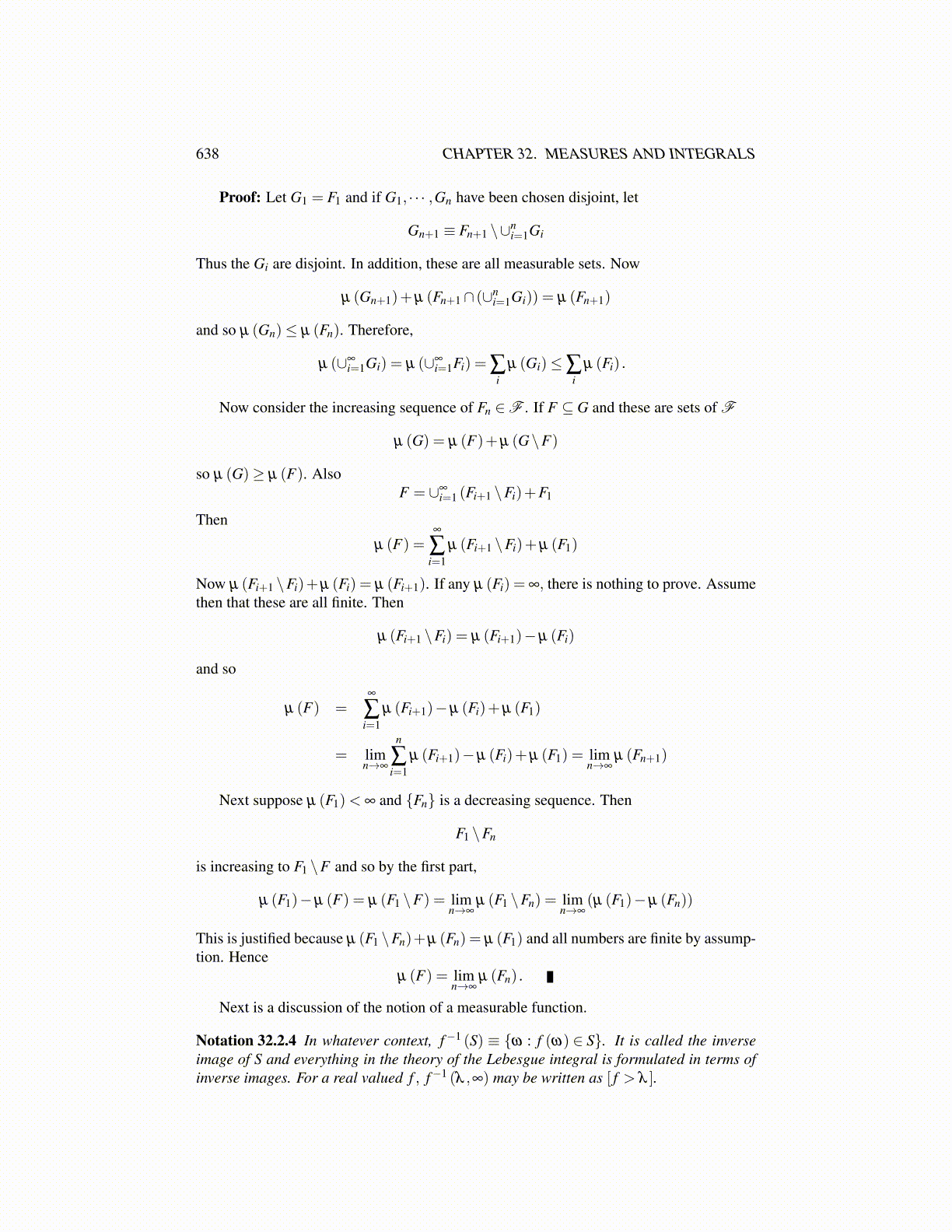
638 CHAPTER 32. MEASURES AND INTEGRALS
32.3 Measures and Outer MeasuresThere is also something called an outer measure which is defined on the set of all subsets.
Definition 32.3.1 Let Ω be a nonempty set and let λ : P (Ω)→ [0,∞) satisfy thefollowing:
1. λ ( /0) = 0
2. If A ⊆ B, then λ (A)≤ λ (B)
3. λ (∪∞i=1Ei)≤ ∑
∞i=1 λ (Ei)
Then λ is called an outer measure.
It is just like a measure except you only get 3. and you do not know that you get equalityif the Ei are disjoint. Every measure determines an outer measure. For example, supposethat µ is a measure on F a σ algebra of subsets of Ω. Then define
µ̂ (S)≡ inf{µ (E) : E ⊇ S, E ∈ F}
This is easily seen to be an outer measure. Also, we have the following Proposition.
Proposition 32.3.2 Let µ be a measure as just described. Then µ̂ as defined above, isan outer measure and also, if E ∈ F , then µ̂ (E) = µ (E).
Proof: The first two properties of an outer measure are obvious. What of the third? Ifany µ̂ (Ei) = ∞, then there is nothing to show so suppose each of these is finite. Let Fi ⊇ Eisuch that Fi ∈ F and µ̂ (Ei)+
ε
2i > µ (Fi) . Then
µ̂ (∪∞i=1Ei) ≤ µ (∪∞
i=1Fi)≤∞
∑i=1
µ (Fi)
<∞
∑i=1
(µ̂ (Ei)+
ε
2i
)=
∞
∑i=1
µ̂ (Ei)+ ε
Since ε is arbitrary, this establishes the third condition. Finally, if E ∈ F , then by defini-tion, µ̂ (E)≤ µ (E) because E ⊇ E. Also, µ (E)≤ µ (F) for all F ∈ F such that F ⊇ E. Itfollows that µ (E) is a lower bound of all such µ (F) and so µ̂ (E)≥ µ (E) .
32.4 Measures from Outer MeasuresEarlier in Theorem 33.1.1 an outer measure on P (R) was constructed. This can be usedto obtain a measure defined on R. However, the procedure for doing so is a special case ofa general approach due to Caratheodory about 1918.
Definition 32.4.1 Let Ω be a nonempty set and let µ : P(Ω)→ [0,∞] be an outermeasure. For E ⊆ Ω, E is µ measurable if for all S ⊆ Ω,
µ(S) = µ(S\E)+µ(S∩E). (32.4)